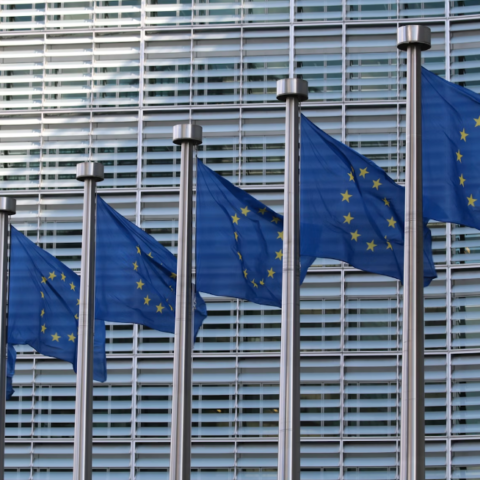
By: Bruce Li
On April 3, 2014, the European Union voted in favor of measures that would promote equal access to the Internet by preventing Internet providers from charging for “preferential access” to their networks. The EU was lauded by net neutrality advocates for its effort to progressively shape Internet policy for the future. Meanwhile in the United States, the state of net neutrality and the government’s role in regulating the Internet is more muddled. All this prompts the question: what exactly is net neutrality?
Net neutrality was a phrase coined by Tim Wu, Columbia University media law professor, to describe the principle that governments and Internet service providers should give all data, content, and information over the Internet equal treatment. This obviously means no discrimination towards certain types of content, but also no discrimination based on user, site, platform, or application—essentially, an unregulated “open” Internet.
To have a better understanding of what net neutrality is, it can be helpful to imagine what net neutrality isn’t. In a world without net neutrality, perhaps you wouldn’t be reading this article unless you were paying for a certain package from your service provider. Perhaps you would be restricted from accessing certain sites, or perhaps you would have to pay based on the amount of time you spend using the Internet. Given this kind of power, you can imagine that maybe these providers would have little incentive to continue to innovate and actively improve their product for the consumer. Perhaps these ideas sound far-fetched. But our perceptions of the Internet have been shaped by its history and the U.S. government’s treatment of it since the beginning.
Private companies that provide a good or service to consumers are known as common carriers if they are monitored or are operating under the authority of a regulatory agency. This includes the telecommunication industry. In the ‘70s, when AT&T controlled the phone service market, regulators wanted to ensure that AT&T would be unable to use its dominance as a monopoly to influence the just-starting market for companies providing online services. So these regulators created a new category of companies that would be evaluated differently than these common carriers. Companies whose infrastructure supported online services would not fall under the same category as those who provided telecommunications services, but under something known as “information services.” And when Congress passed the 1996 Telecommunications Act, the Federal Communications Commission was put in charge of the broad category of “telecommunications services.” Companies in the information services category would essentially face none of the same common carrier regulations that companies in the telecommunications services did.
This online market grew very rapidly. Soon, companies classically labeled as telecom like Verizon and AT&T started offering these same online services and access to the Internet, and they argued that their broadband and DSL Internet services should fall under this category of information services with no regulation. The FCC responded to this pressure by reclassifying these new broadband services as information services, effectively removing the original regulations.
However, in response to the FCC’s actions came lawsuits. People argued that the FCC was acting outside of the power granted to it by the Telecom Act, and Justice Antonin Scalia agreed, slamming the agency for its “implausible reading of the statute.” But in spite of this opposition, the FCC’s actions held and these new broadband services remained unregulated.
In 2010, the FCC approved an Open Internet Order that prohibited broadband providers from restricting access to certain Internet content, a move that upheld the principles of net neutrality. However, the following year, Verizon filed a suit, arguing that the FCC had gone too far and overstepped its authority. And earlier this year, a federal appeals court in Washington struck down the FCC’s attempt at imposing rules on how providers can and cannot manage traffic on their own networks. Now, with questions of a potential case in the Supreme Court, the future of net neutrality is as unclear as ever.
With all this in mind, it seems that the United States is moving in a different direction than Europe. Earlier this month, Netflix CEO Reed Hastings pleaded with the FCC to expand net neutrality. Netflix has experienced great success as of late, offering an extensive selection of movies and TV shows for online streaming, but the company is still dependent on its Internet service providers. Right now, Hastings argued, companies like Comcast can charge a “toll” for special connections to ensure its video streaming gets through to its customers without any hitches, exactly the kind of thing that the EU voted to prevent. The Netflix CEO urged the FCC through an essay to do away with this system of payment in order to ensure net neutrality for other high-speed Internet operators.
AT&T, another Internet service provider, has responded with a different argument. Rather than push for removing the charges for access to preferential networks, AT&T has advocated instead for rules that would allow this kind of “toll” system, saying that this would only foster competition by allowing companies to “pay to play.” Furthermore, AT&T argued, without this sort of payment Internet service providers like AT&T would have to spend “billions to accommodate the network demands imposed by bandwidth-intensive applications that are used extensively by only limited subsets of subscribers.”
However, proponents of net neutrality disagree, saying that AT&T’s rule would not engender competition, but stifle it. If big companies like Netflix could buy their way into accessing preferential networks, they would undoubtedly hold the advantage over smaller startups. Regardless, the FCC denied the Netflix CEO’s appeal, leaving the state of net neutrality in the United States back in its same uncertain position. While Europe moves forward, we can only wonder what the United States will do in the near future and how it will affect the way we interact with the Internet.

